Four draws and only one win from seven games. That’s what Mikel Arteta gave to Arsenal in the league after he was appointed as the club’s manager last December. Their last win in the Premier League was dated back to the first day of 2020; when they beat Manchester United at their home.
The visitors, Newcastle, are not running well either. The Toon Army only won one game from their last seven league games. Such mediocre performances from both teams made some fans underestimated the value of this game. However, the game proved the opposite. A dramatic tale of two halves was served at the Emirates Stadium; which resulted in four second-half goals for the home side. Without further ado, this tactical analysis will tell you how the match unfolded.
Lineups
Mikel Arteta lined his team up in 4–2–3–1. Bernd Leno started between the sticks with Héctor Bellerín, Shkodran Mustafi, David Luiz, and Bukayo Saka in front of him. Arsenal’s backline was supported by the double pivots of Dani Ceballos and Granit Xhaka. Up top, Eddie Nketiah was picked to spearhead the attacking line. Behind him, there’s a trio of Nicolas Pépé, Mesut Özil, and Pierre-Emerick Aubameyang. The dugout was filled with names like Lucas Torreira, Alexandre Lacazette, and Joe Willock.
Oppositely, Steve Bruce set his men rather defensively in a 5–4–1. In the goal, regular-choice Martin Dúbravka started the match. In front of him, Federico Fernández, Jamaal Lascelles, and Ciaran Clark formed a back-three; flanked by loanees Valentino Lazaro and Danny Rose. Newcastle’s engine room was filled with names like Sean Longstaff and Nabil Bentaleb. They were supported by Miguel Almirón and Allan Saint-Maximin in the wide areas. Upfront, Joelinton was chosen as the visitors’ target man. Players like Fabian Schär, Matt Ritchie, and Isaac Hayden had to start the game from the bench.
Predictable defensive strategy from Newcastle
In this part of the analysis, we’re going to look at the tactics used by Newcastle defensively. Before going there, let’s see the stats. The statistics show that Newcastle averaged 39.2% of ball possession in every Premier League game so far. This number is the league’s lowest; even more than three per cent lower than Burnley, who have the second-lowest tally as yet.
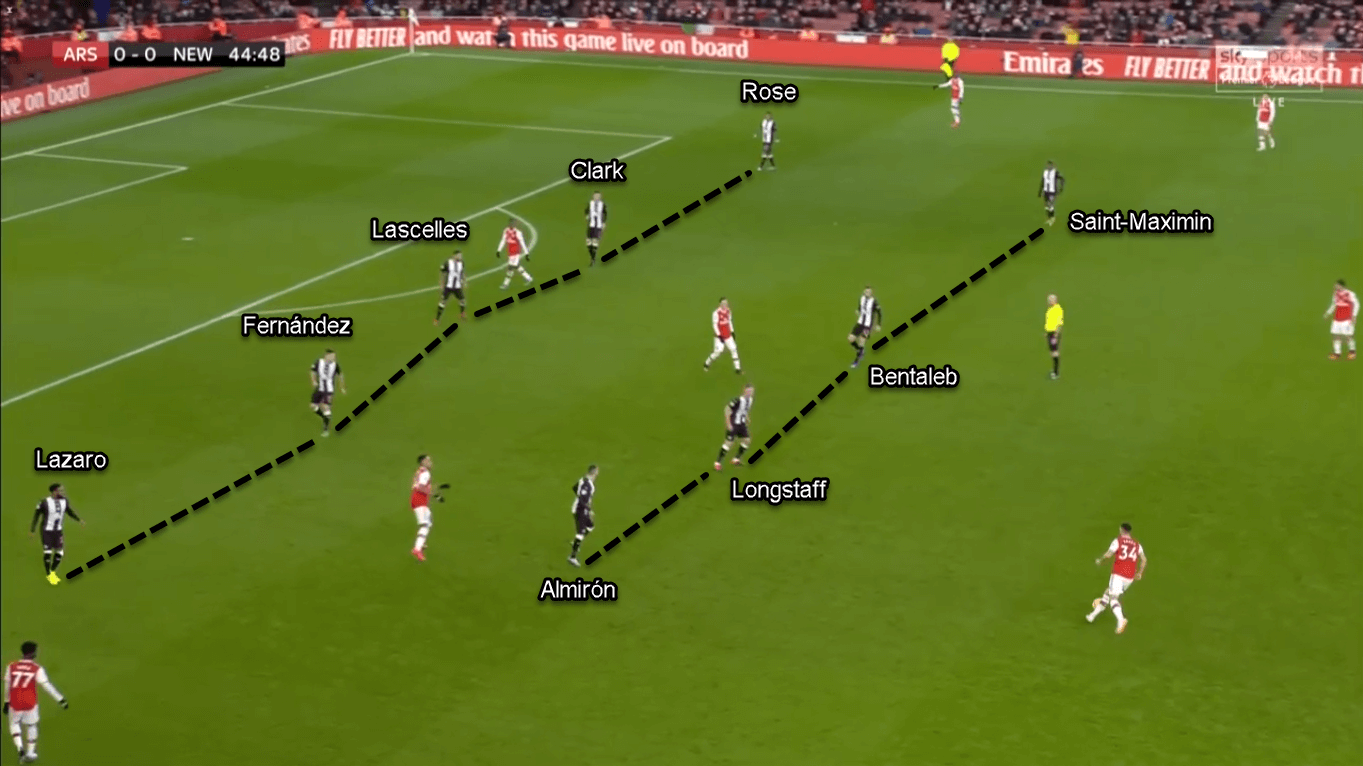
As predicted, the visitors used a deep-block 5–4–1 when they didn’t have the ball. In the 5–4–1, Newcastle were very compact both vertically and horizontally. It means they wouldn’t allow any room in between the lines; as well as protecting the wide areas with their wing-backs.
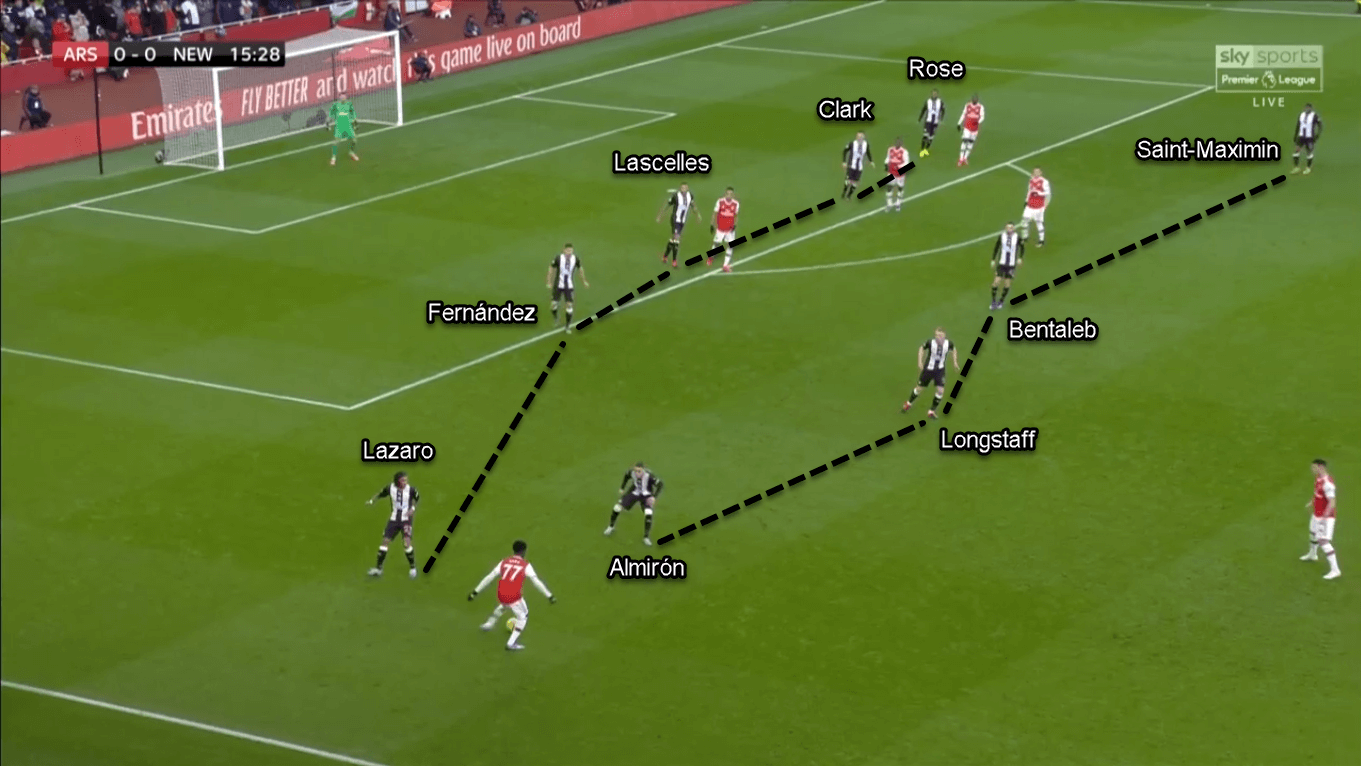
If Arsenal were able to bring the ball to their flank players, Newcastle’s nearest wing-back would immediately close him. Not only that, but the wing-back would also be supported by his side’s winger to do the defensive job. By doing so, this approach forced Arsenal into ineffective U-shaped passing patterns for many times in the game.
The Magpies opted for a direct attacking approach
In this game, Newcastle opted a more direct approach to create their chances. Mainly, they would utilise their goalkeeper Martin Dúbravka to send long balls to Joelinton. The statistics show that Dúbravka made a total of 28 passes, which 23 of them (82.14%) were targeted to land in Arsenal’s pitch.
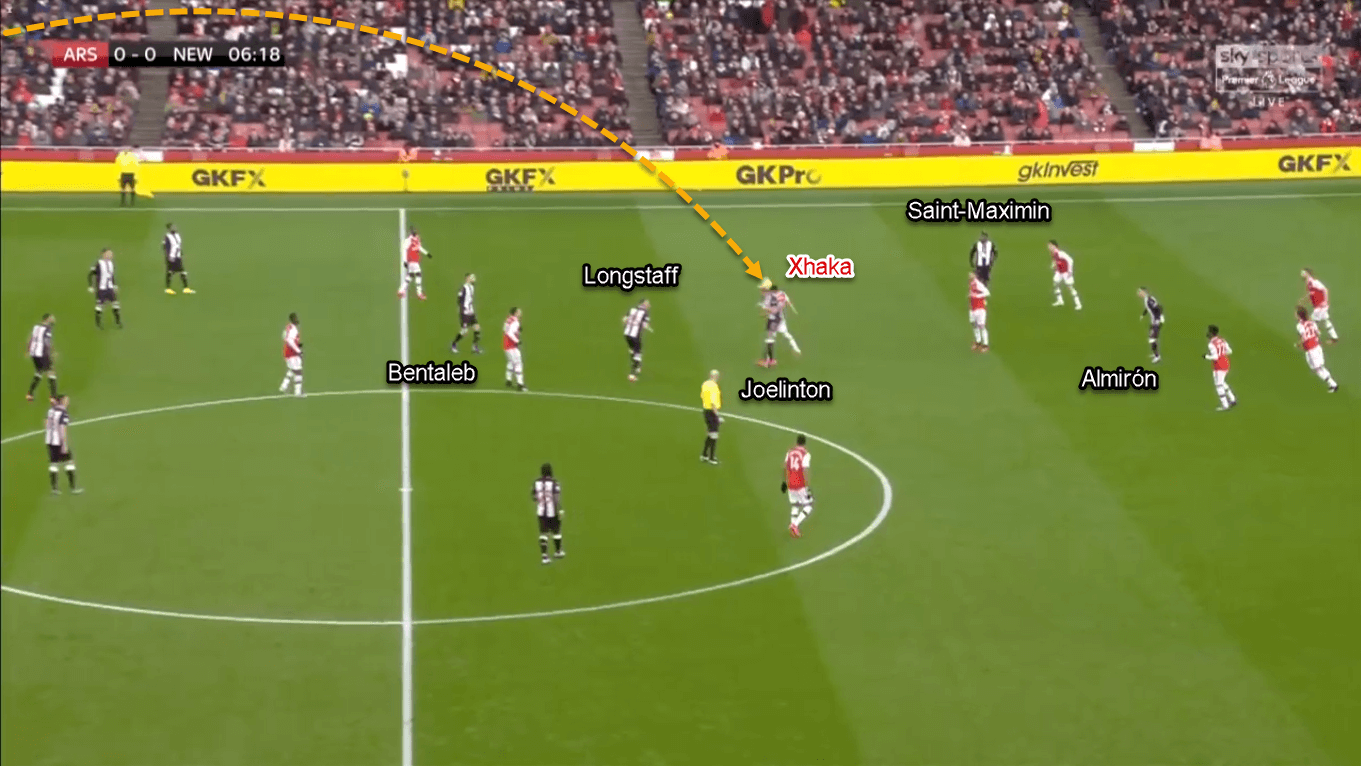
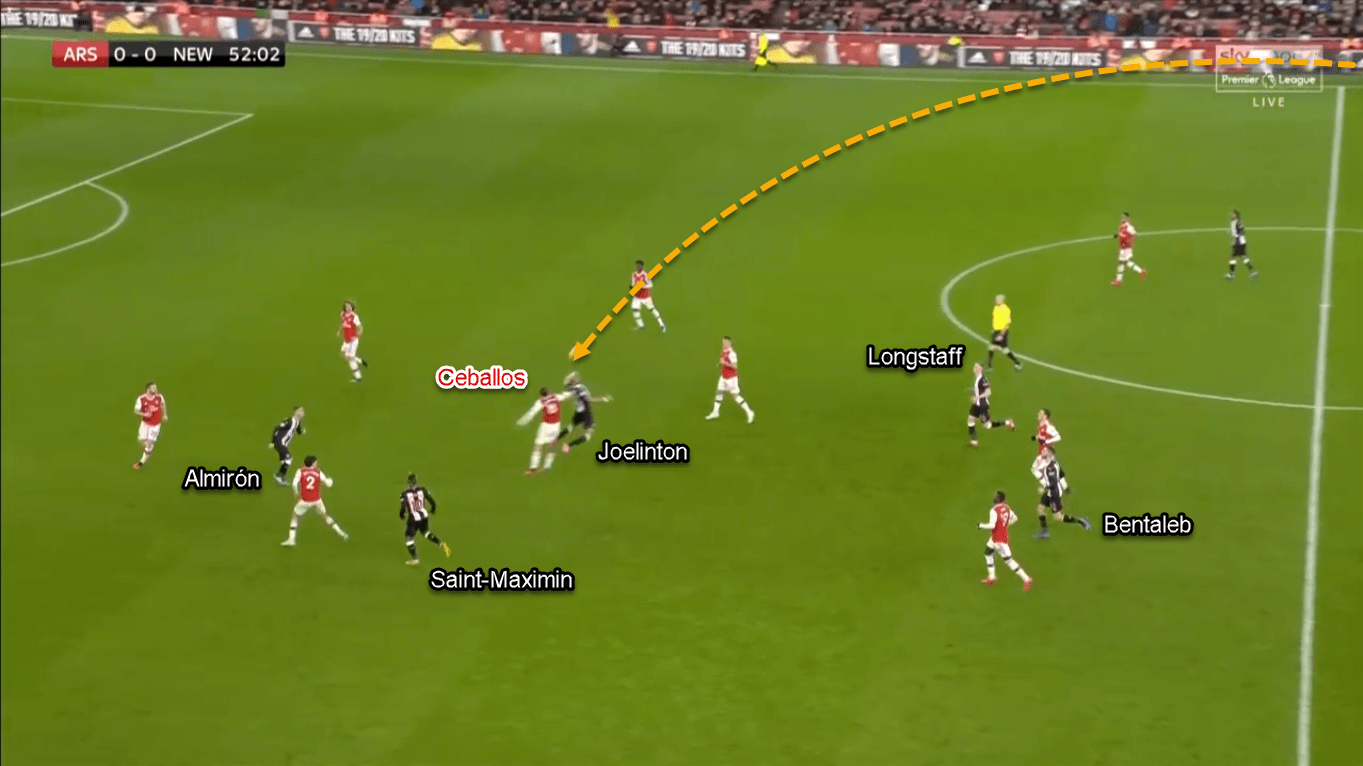
However, the tactics weren’t just ‘kick it long and pray for the best’. Bruce instructed his men to flood the area nearby Joelinton to receive potential second balls. Specifically, he would ask the wingers — Almirón and Saint-Maximin — to come near Joelinton. Even so, sometimes Bruce would also allow his midfielders to offer themselves as the forward’s lay-off options.
Another facet in Newcastle’s attack is their reliance on transition. In transition, they usually depended on their attackers’ individual brilliance; particularly Saint-Maximin. The stats show that the 22-year-old forward attempted 13 dribbles in this game, which eight (61.53%) of them were successful.
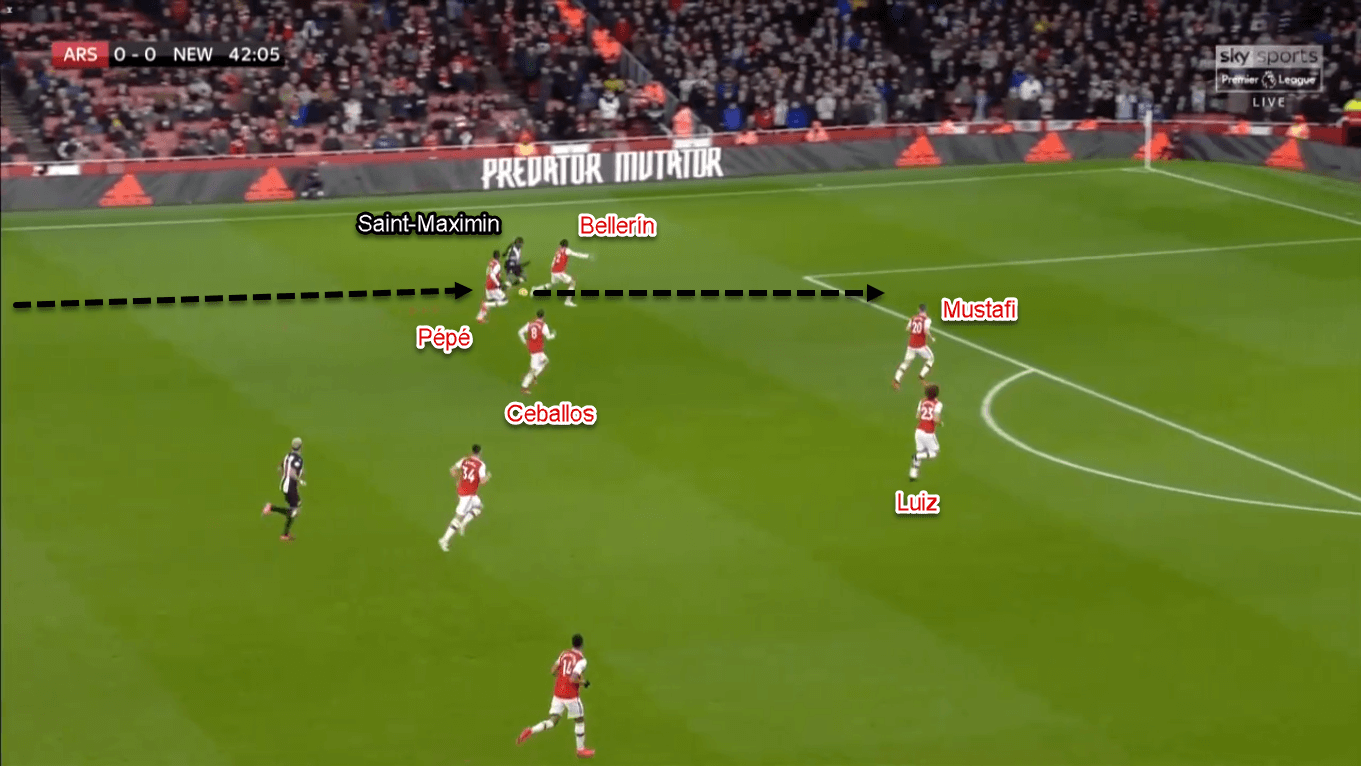
Not only that, sometimes the visitors allow one of their wing-back to join the counter-attack; particularly the far-side wing-back. It means that if Newcastle started their attacks from the left, the right wing-back would often bomb forward to join his comrades. This particular tactic was used because the wing-back would usually come into the final third from an underloaded area. On top of that, he could also arrive from the defender’s blind-spot; thus making him rather unpredictable.
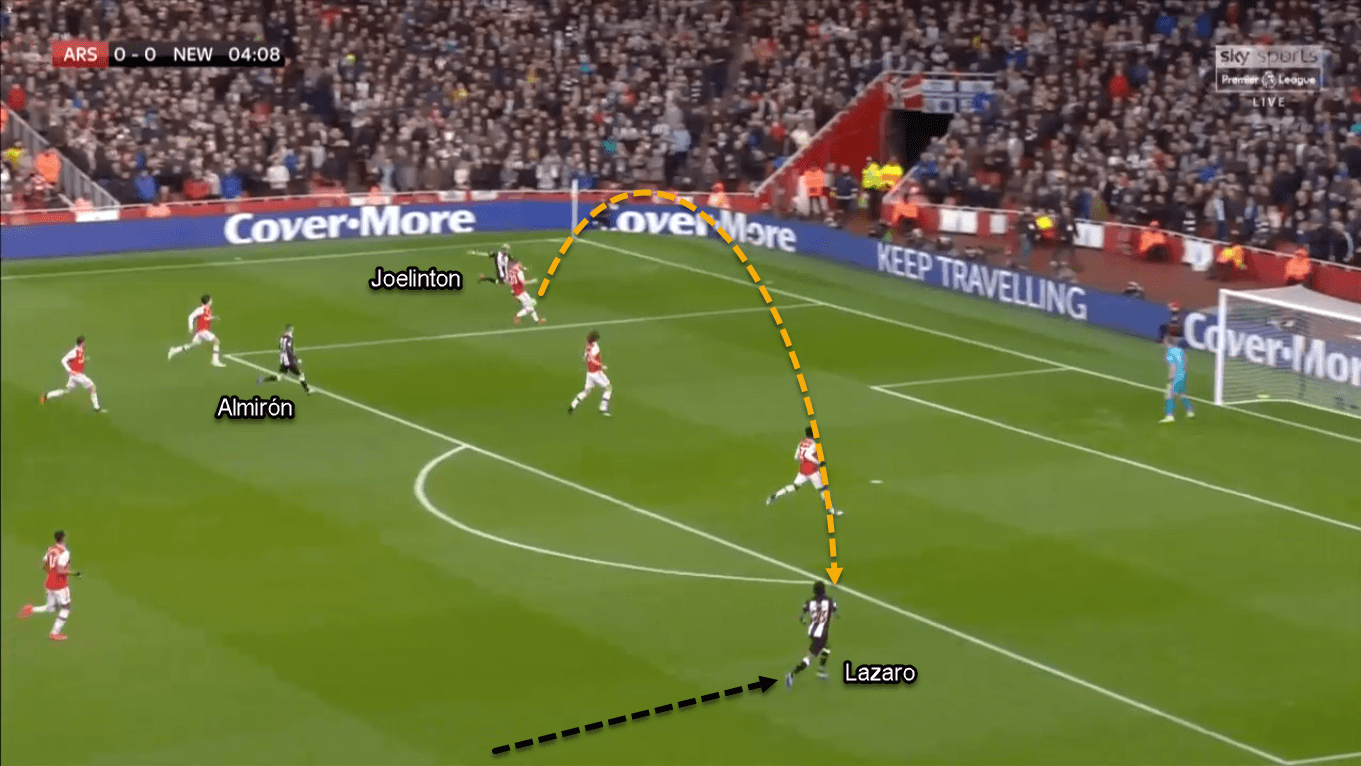
Arsenal’s build-up structure
Facing Newcastle’s deep defensive block, Arsenal used a well-planned attacking structure. In the first phase, the home side would form a temporary back three. The back three consisted of Xhaka dropping to the left half-space, and the centre-backs moved accordingly. The full-backs then could go higher; even alongside the forwards.
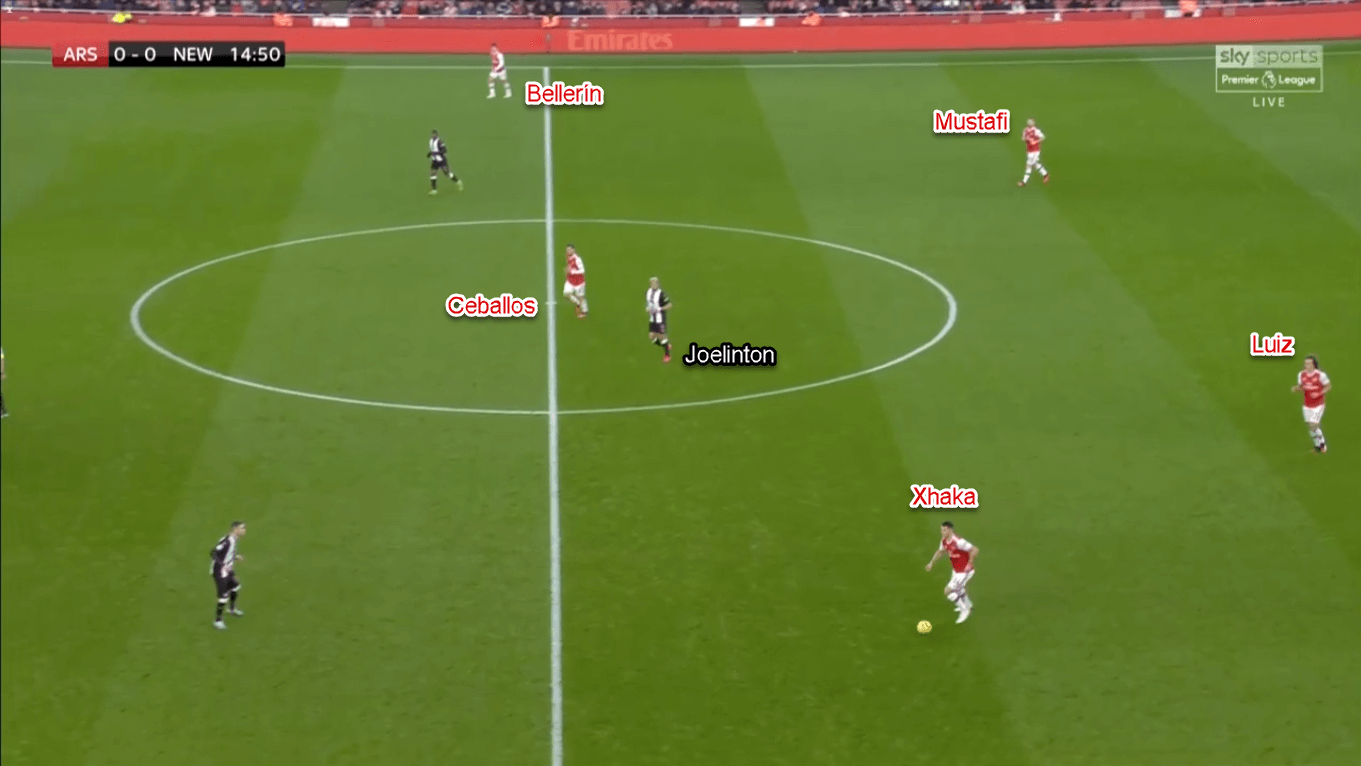
It didn’t end there. Then, they formed a diamond-shaped structure with Ceballos at the tip; between Joelinton and his midfield teammates. With three players at the back spreading from one half-space to another, Arsenal could reach the flanks rather quickly. Not only that, but it would also prevent Joelinton from being easily accessed in transitions. It was because he would be surrounded by three men in red shirts in such a situation.
However, there was a tweak in the structure. As mentioned before, Arsenal’s full-back could go higher due to the makeshift four-man structure at the back. Yet, only Saka has given a full attacking license to play alongside the forwards. His partner Bellerín had some movement restrictions in the right flank. The reason was to prevent Saint-Maximin from doing serious damage in transitions. It resulted in the shape to look like a lopsided 3–2–5 at times.
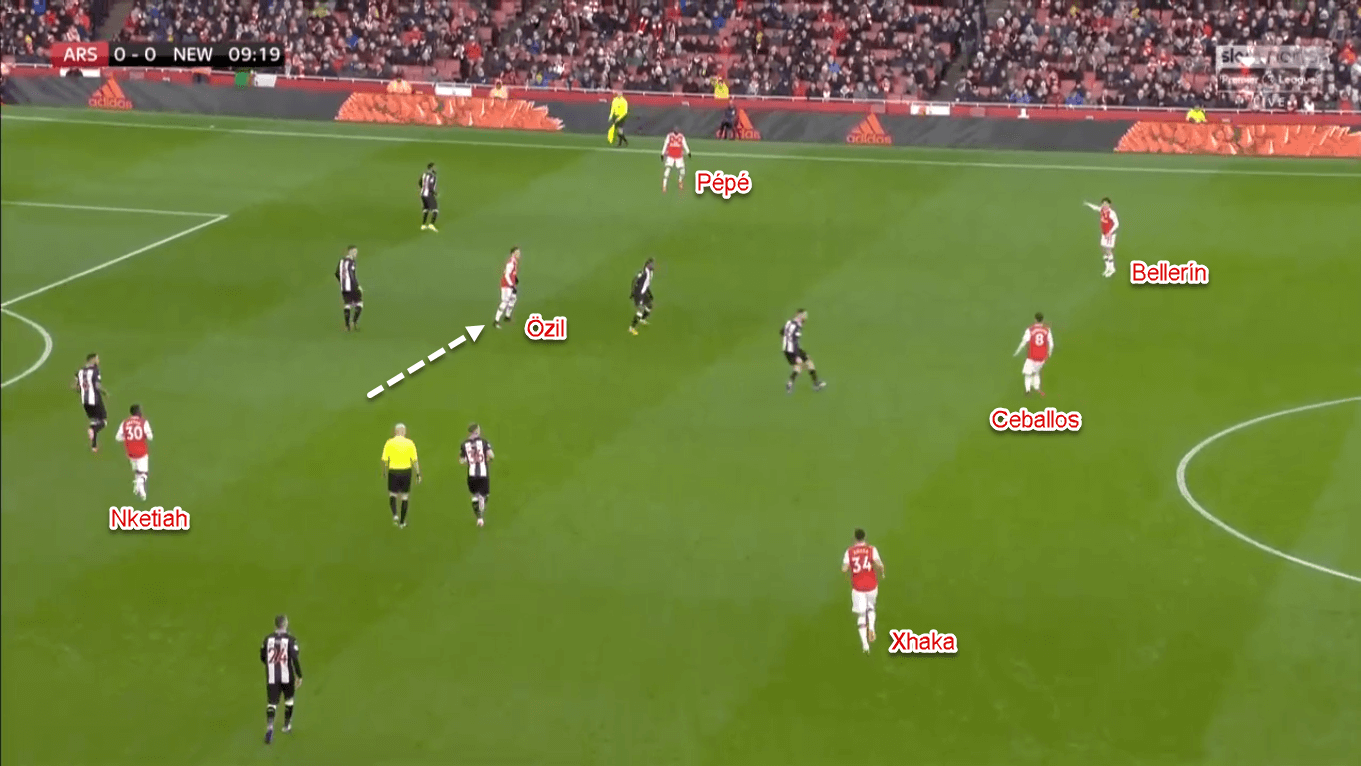
The Gunners’ structure in the final third (and their issues)
In the final third, Arsenal put five players with each having different roles. The left flank was filled by marauding full-back Saka, while right-winger Pépé hugs the touchline across the pitch. From there, they could try to dribble their way in or send crosses into the box.
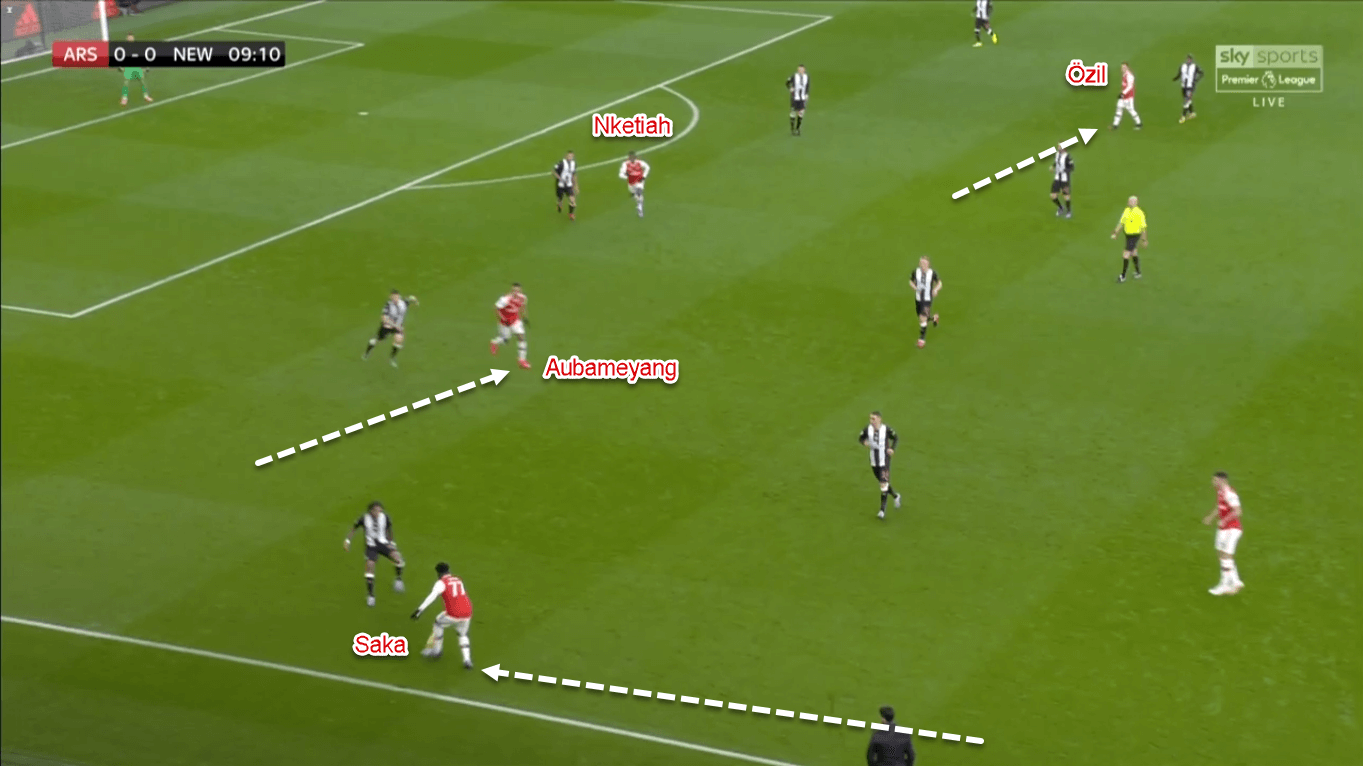
The half-spaces were occupied by Aubameyang and Özil; which played in different positions. Aubameyang played as a tucking-inside left-winger, while Özil acted as a free-roam attacking midfielder. Furthermore, the central lane was occupied by Nketiah, the 20-year-old forward. The trio was mainly instructed to combine in between the lines before making a shot attempt. However, Newcastle’s compactness in their deep block prevented this to happen.
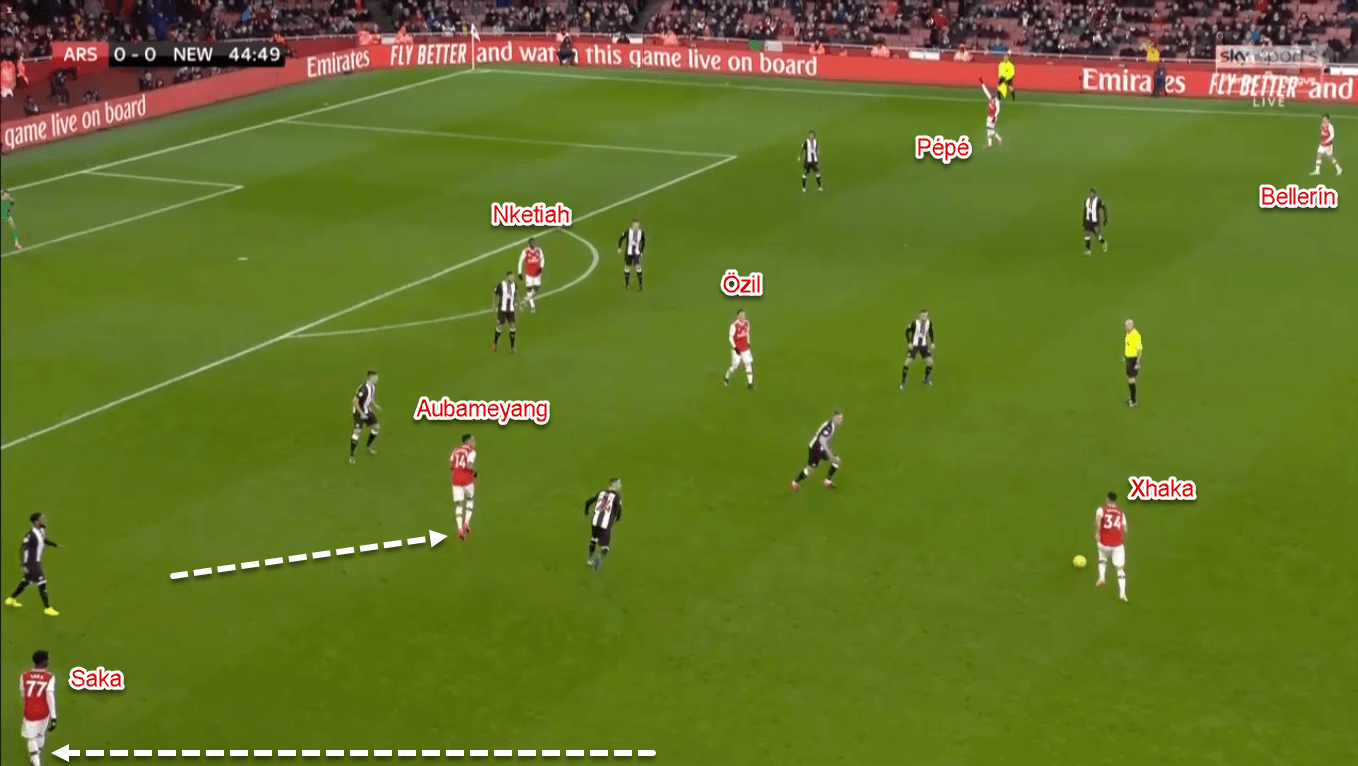
Arsenal’s offensive problems in the first half also happened because of their lack of quality, particularly in the flanks. First, only a handful of dribbles came into success. The statistics prove this with only six (37.5% successful rate) out of 16 dribble attempts went past the opponents.
Second, a mix of poor crossing setup and questionable decision making. In the first half, Arteta didn’t instruct his forwards to flood the box in crossing situations. At times, there was only a maximum of two players to offer as crossing targets. Even though only had one or two teammates in the goalmouth area, Arsenal’s flank players kept sending the crosses in. This is why their crossing success rate was very low in the first half. For a fact, only two (18.18%) out of 11 crosses went into a red-shirted player.
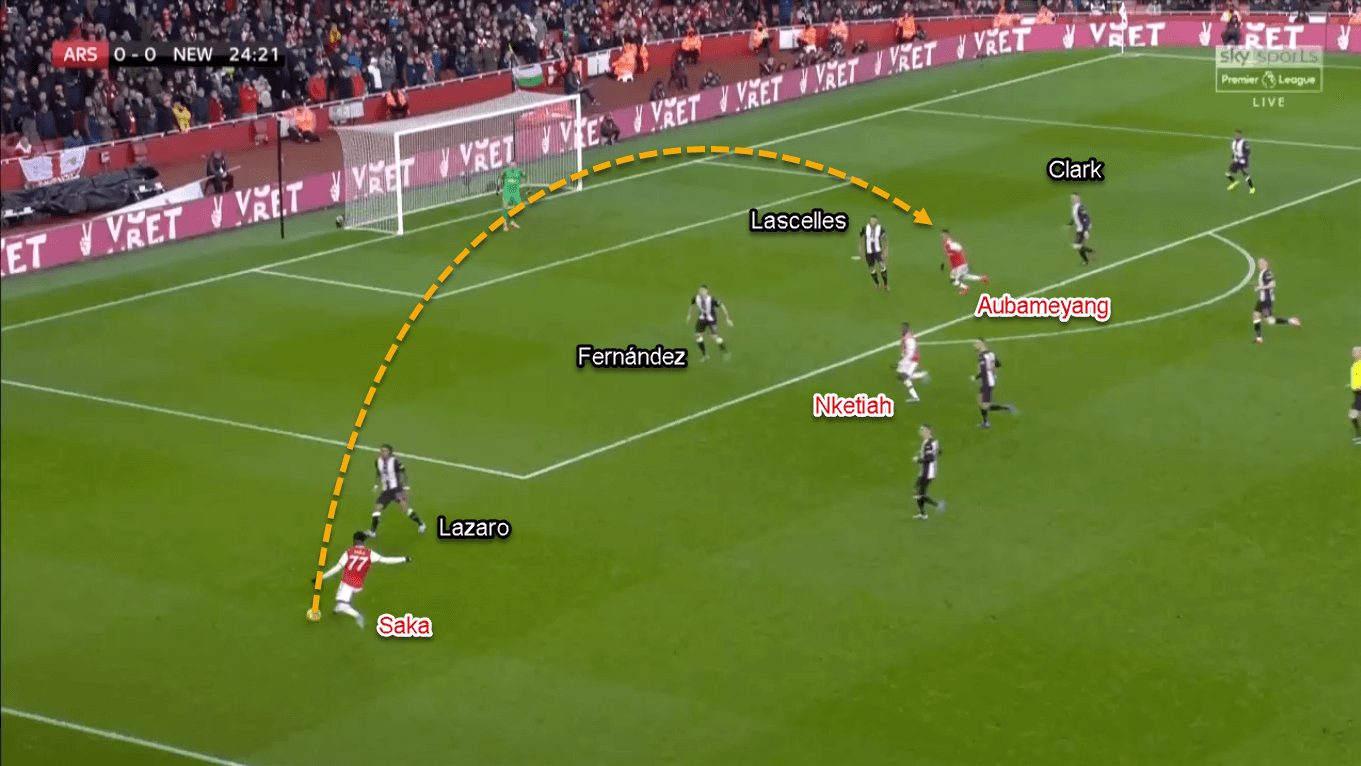
Arteta’s second-half adjustments
In the second half, Arteta set his team in a more aggressive fashion. First, he allowed Bellerín to bomb forward; leaving his previous defensive duty on Saint-Maximin. This further would make him play in parallel with the attackers rather than defensive midfielder Ceballos.
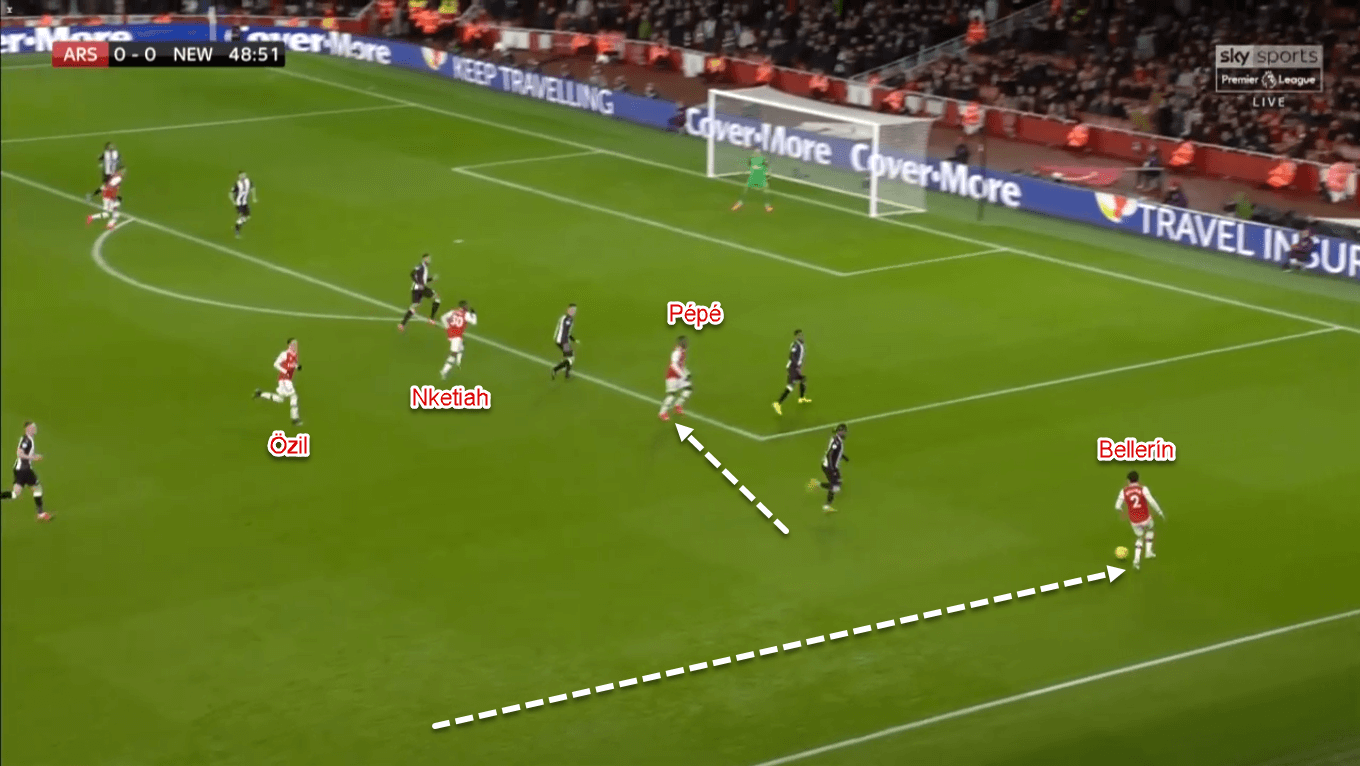
Bellerín’s advanced positioning resulted in a chain of movements. Pépé then had to tuck inside — similar to Aubameyang — to compensate the Spanish’ new role. Özil, previously playing in the right half-space, then could play deeper because of Pépé’s inclusion. In between the lines, Özil was able to move freely; even side-to-side if needed.
Second, Arteta fixed his crossing setup. In the first half, Arsenal’s attackers were instructed to combine in between the lines; practically playing just in front of the box. In the latter 45 minutes, Arteta asked Aubameyang, Nketiah, and Pépé to come into the box more often; with Özil playing behind them. With multiple players staying inside the penalty area, Arsenal had constant aerial threats. For a fact, Aubameyang’s goal resulted from this situation.
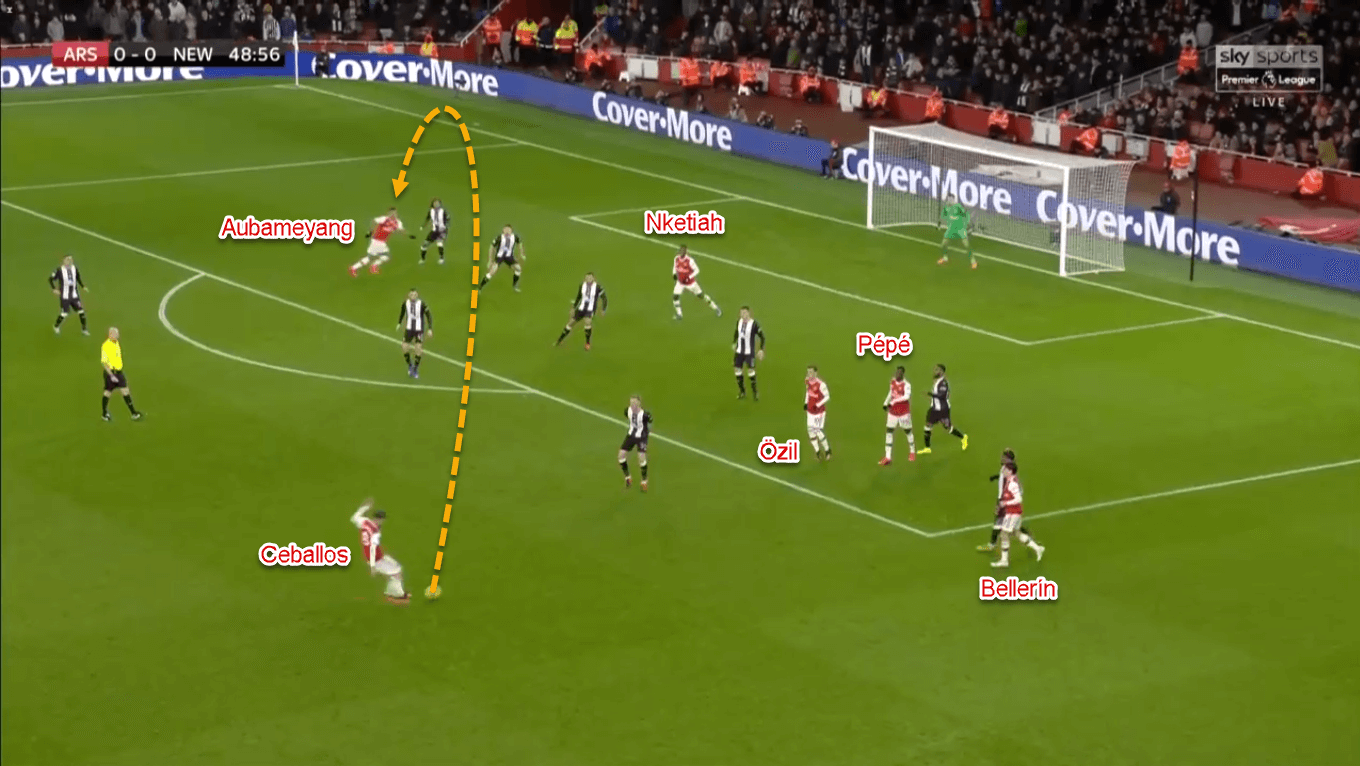
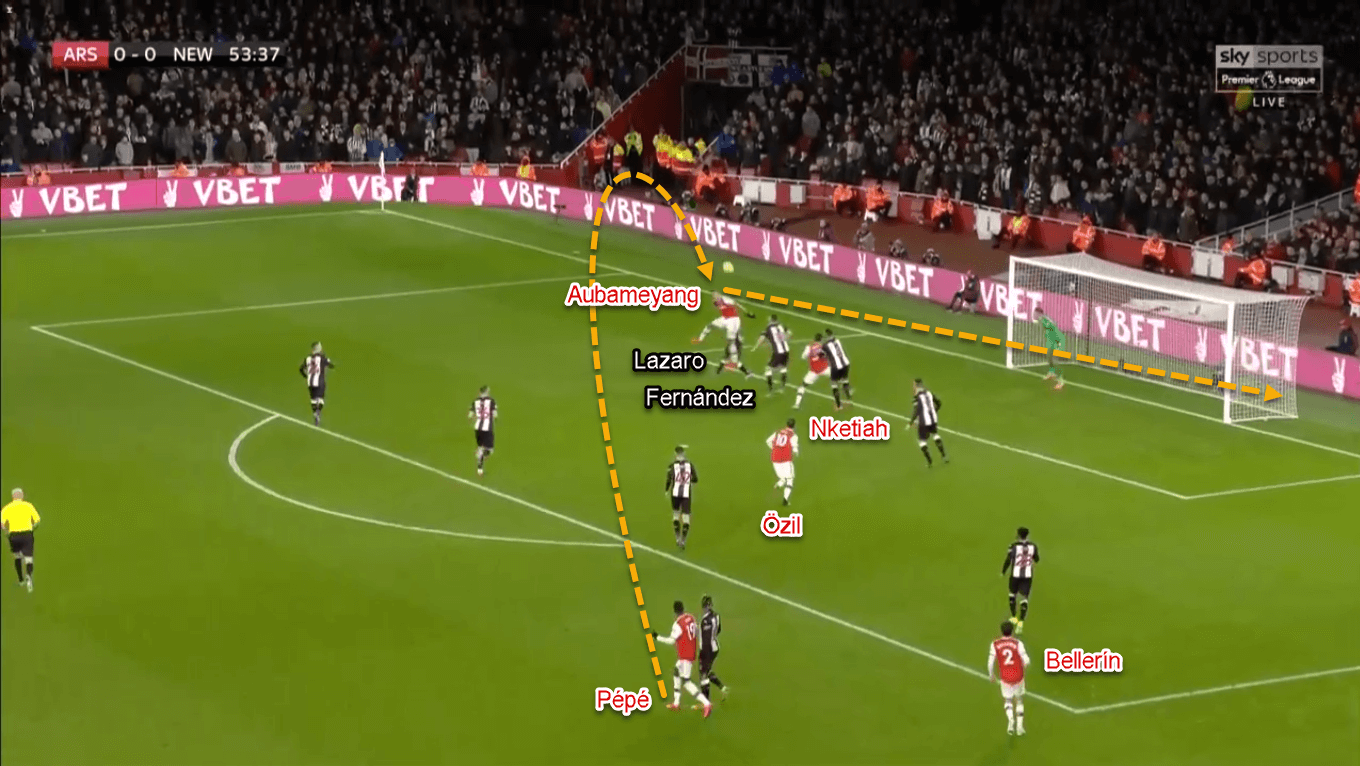
The numbers also proved that Arteta’s tactical adjustments were effective. In the second half, Arsenal completed four (44.44%) of their nine crosses. It improved a lot from their 18.18% successful crossing rate in the first 45 minutes. Not only that, but there’s also an improvement in the Gunners’ dribbles quality in the second half. From 13 dribbles attempted by Arteta’s men in the second half, seven (53.84%) of them were successful.

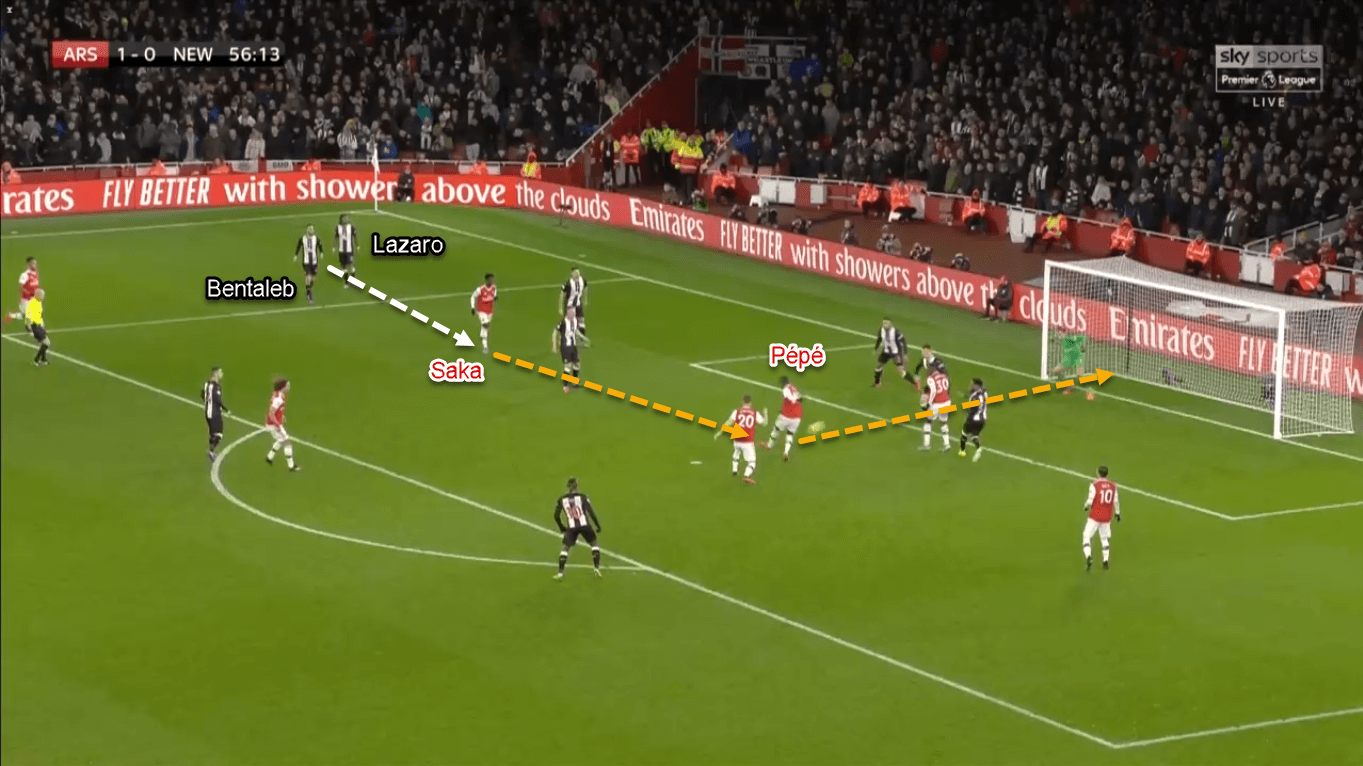
Newcastle with an unsuccessful reply
After conceded twice in four minutes, Newcastle became more aggressive in their defending. The most notable change in their defensive setup was their midfielders’ increasing press intensity. The four-man midfield would actively step up to prevent Arsenal from building their attacks comfortably from the back.
However, their advanced movements opened an unwanted gap between the lines. It’s never a good idea to allow space there if your opponents have Özil in their armoury. As expected, Özil exploited the area in between the lines many times in the second half.
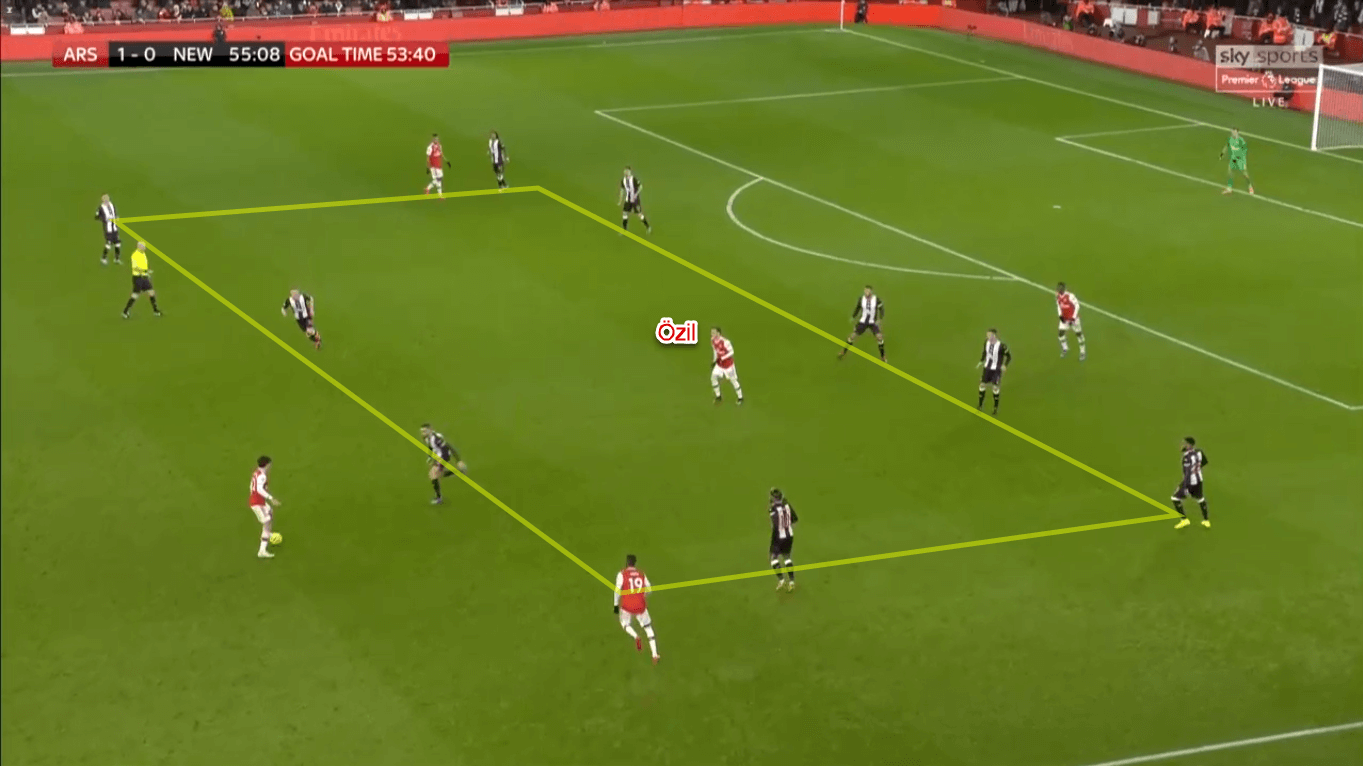
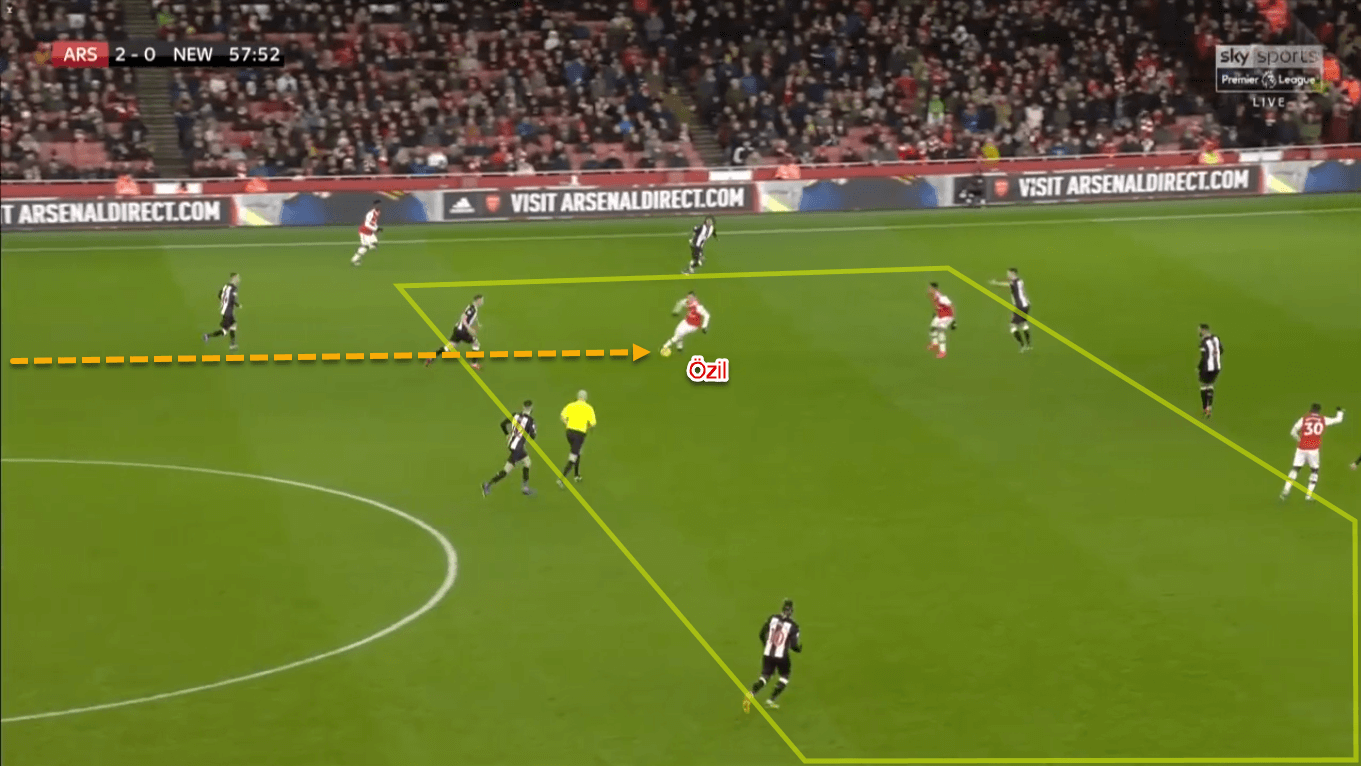
Later, Bruce shifted his team to 4–1–4–1 to contain free-roaming Özil. In the 4–1–4–1, Bentaleb acted as a lone defensive midfielder. In front of him, Longstaff stepped up to join Almirón in a more advanced role. Nevertheless, the change didn’t bear fruits. It’s proven by Özil’s goal which started from the German capitalising the gap in between the lines.
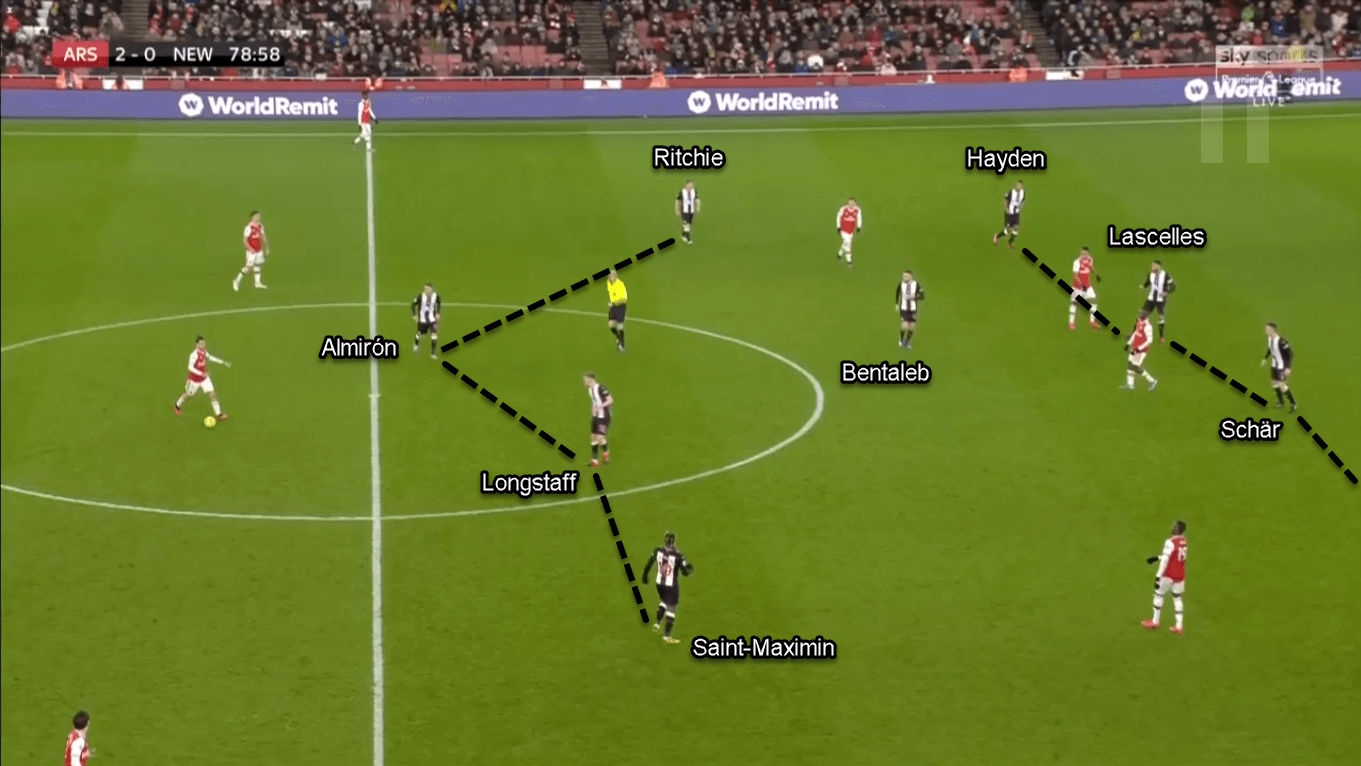
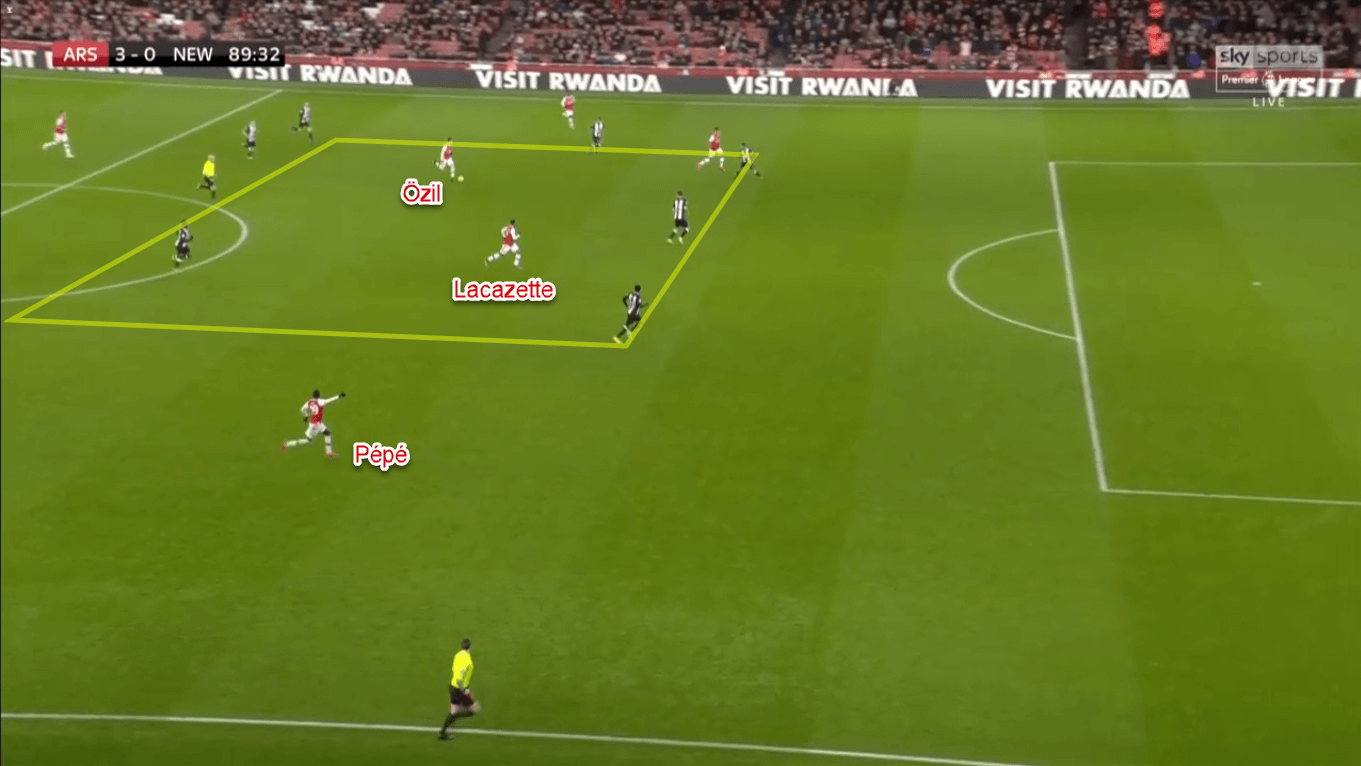
Conclusion
Who would’ve thought Arsenal would score twice in four minutes after being silenced in the first half? Also, who would’ve thought they would score two more in the last six minutes? Especially after their practically walking-pace football after Pépé’s goal? If there’s someone thought all of this, it would almost definitely be Arteta himself.
The 37-year-old shows his worth with the clever tactics he deployed in the latter 45 minutes. Despite that, it’s too soon to say that he’s one of the most promising young coaches at the moment. For now, Arteta has great homework to lead Arsenal back to the European spot. Hopefully, we’re going to see more of the Spaniard’s tactical creativity along the way.




Comments